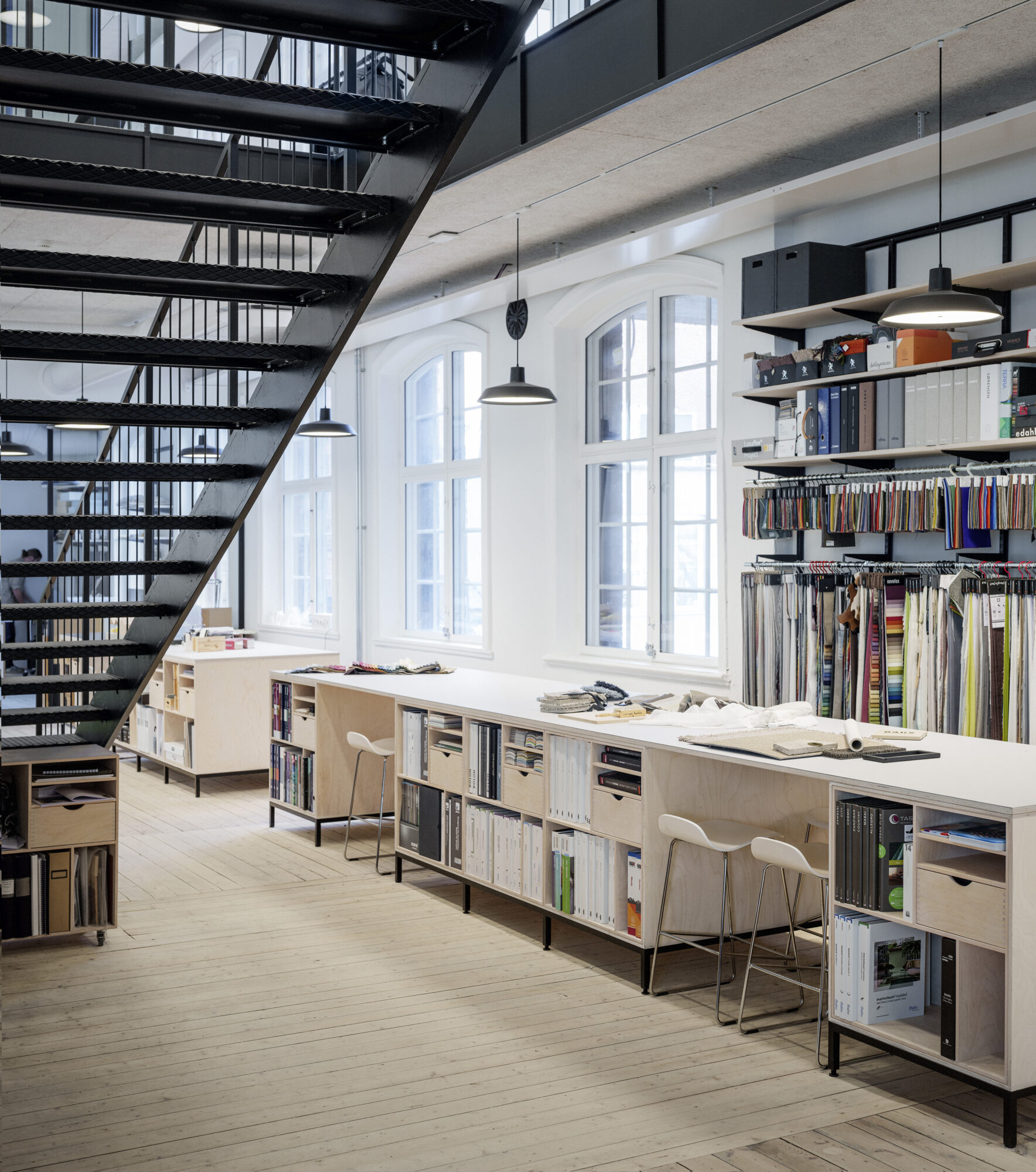2023-02-20
The art of decorating with recycled materials
How to make an interior last over time? Reuse can add character and identity to an interior, making it appreciated and worth keeping for a long time. We discuss success factors and pitfalls with two of FOJAB's experts on reuse in interior design.
The interior design industry has long been accused of encouraging a throw-away mentality. But recently, something has changed.
- Most people think it's healthy to make use of what's available - as long as it's not too complicated. This is where we can help," says Lisa Mannheimer, interior designer at FOJAB.
What is the difference between working with reuse and new production?
- We spend more time inventorying, finding and assessing furniture. The process as a whole does not need to take longer because we avoid long delivery times. For the customer, it's not necessarily cheaper, as you might think. It is rather that the costs move from purchasing to working time for the architects. A working time that many of our customers from a sustainability perspective often think is worth paying for," says Lisa.
- Although there is a wide range of second-hand furniture available, there is slightly more freedom in working with new production. But the constraints can make the work process more interesting and the quality or aesthetics don't have to be worse, says Robin Larsson, an architect at FOJAB who has worked extensively with reuse in interior design.
The key to success is an interior concept that is strong enough, but at the same time flexible, so that the choice on the reuse market is not too limited.
- With an interior designer's trained eye and sense of quality and design, we can scan the market and assess what fits the budget and concept of a specific project. What is worth saving and what can be refined - and above all, what fits together. We can create an interior that feels cohesive even if the components are taken from different places, eras and contexts," says Lisa.
The rental market for furniture is growing, which is positive from a sharing point of view. At the same time, we have historically tended to show more care for things we own, less for what we rent. So how do you avoid the wear and tear of an interior?
- Regardless of ownership, we need to take care of our furniture and understand that nothing should be thrown away from now on. Don't jump on the sofa, don't rock the chair - you're doing the climate a favor. Working with sentimental value, design and strong furniture increases the chances of the interior lasting over time," says Robin and continues:
- For me, a sustainable interior is not just recycled, but so conceptual and stylish that it also stands the test of time. I love environments that feel like time has stood still - without feeling dated. Repurposing can add a unique character and a strong identity, which in turn can make environments even more appreciated.
- Of course, it can be a challenge if the customer is sitting with boring furniture from before and is looking for something new and fresh. A customer who pays for a change often wants to see a clear difference. The simple solution has long been to propose a major overhaul, but both we and customers may be thinking a little differently today. We must be able to offer an environment that is at least as good as buying new. But it will probably take some time before the resistance to second-hand is completely gone," says Lisa.
One way to make office furnishings last longer, for example, is to work long-term with a good base in the interior material choices that suit many different tenants. That way, not everything has to be replaced when a new company moves in.
- That's why we often design with flexibility and demountability in mind - and let the client's identity be reflected in the loose furniture instead. As architects ourselves, we can be a bit locked into what is nice and ugly. This is something we need to work on as an industry. The most important sustainability approach in the work with interiors is to avoid wear and tear and ensure that the disposal is done in a responsible way," says Robin.
Is there a difference between working for public and private clients?
- It is absolutely possible to create beautiful and coherent environments with reused furniture even in public procurement, it's all about knowing how to put together the tender documents. We help with that! The most important thing for a good result is that the customer is interested, that they want to move in the same direction. This applies to both the public and private sectors," says Lisa.
But she actually thinks that the law on public procurement is not compatible with circular ambitions. "Reuse is based on seizing opportunities as they arise, and this can be difficult to reconcile with such a controlled process as LOU. Public purchasers may also find it more difficult to make decisions as quickly as the purchase of used furniture requires.
What is the key issue for reuse?
- The issue of how to deal with bad furniture is far from resolved, but at least it has been put on the table. Awareness has increased," says Lisa.
- "I agree and call for a national approach to recycling," says Robin. 'The whole chain needs to be reviewed. If we are to stop throwing away, we need a better structure for recycling for both individuals and businesses, and I encourage and cheer on all those who run reuse-related businesses - especially those who refine, upcycle and give end-of-life products a longer life.
